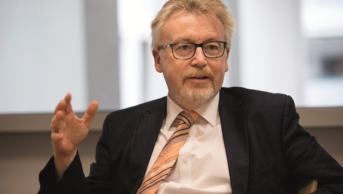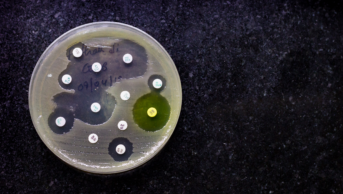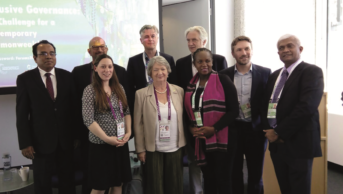
Mikhail Tolstoy / Alamy
A third of the world’s population lacks access to essential medicines. In many low- and medium-income countries, drug therapies are unaffordable to those who need them.
The availability of generic products has a major influence on the price of medicines in developing markets. The medical aid charity Médecins Sans Frontières (MSF) reports that generic competition has lowered the price of antiretrovirals from more than US$10,000 per patient per year in 2000 to US$67 today. This has helped to galvanise the fight against HIV in many of the worst affected countries.
In September 2014, US pharmaceutical company Gilead Sciences agreed to license hepatitis C antivirals sofosbuvir and ledipasvir to seven India-based manufacturers, which will be able to produce and sell more affordable versions in 91 developing countries.
Gilead’s move is an example of voluntary licensing, one mechanism for improving access to affordable medicines in developing countries. By granting a licence and sharing some expertise, Gilead will receive a 7% royalty on all sales from regions that might otherwise have been unable to afford their branded version — but also in countries where no patent protection exists.
So it seems voluntary licensing can make good business sense. Companies can also place tight restrictions on licensees in different countries to prevent the product’s export, restrict the source of raw ingredients or limit the licence period, for example.
Countries can lawfully take steps to overcome some of the barriers that patents present. It has long been recognised that there is a need to consider public health when negotiating trade agreements and intellectual property rights. World Trade Organization agreements allow for member countries to compulsorily license medicines in certain circumstances if they believe the health of the nation requires it.
This has happened recently in Indonesia; the government issued compulsory licences for seven HIV medicines with the owner companies to receive 0.5% in royalties.
Developing drugs is an expensive business. And high development costs translate into high prices as drug companies try to maximise the return on their investment.
Pharmaceutical companies seek to retain the patent protections that give them a monopoly for their products in different markets. This motivation can help explain the ‘evergreening’ of medicines, such as tweaking formulations or adding indications to extend a patent. Delaying generic competition in this way leads to higher medicines prices and reduces patient access to medicines.
Various methods are employed by the pharmaceutical industry to improve drug access without leaving the door wide open to generics manufacturers. Providing the medicine for free through donation programmes is one. Tiered pricing — essentially selling a drug at vastly discounted price in certain markets — is another.
Such measures retain patent protection. However, they can also make health economies reliant on products that might not be so affordable in the future (and volumes of medicines needed for diseases like HIV/AIDS may be difficult for a manufacturer to fulfil). Crucially, ‘preferential pricing’ does not improve, and can even damage, the competitiveness of local markets.
Developing drugs is an expensive business. And high development costs translate into high prices as drug companies try to maximise the return on their investment.
Led by its access campaign, MSF has developed a ‘Push, pull, pool’ project for tuberculosis drugs; it aims to have the initial costs of R&D financed through grants (push funding), further R&D achievements incentivised by milestone prizes (pull funding), and intellectual property shared to enable collaboration and fair licensing of successful medicines (pooling). MSF believes this approach would ‘de-link’ the costs of developing new medicines from the price of resulting therapies.
It remains to be seen whether this proposal gains any traction with the industry.
Patent pooling is itself a relatively new idea. Set up in 2010, the Medicines Patent Pool (MPP) is a voluntary arrangement that has the backing of the United Nations. The MPP negotiates with key patent holders for licences to be made available in the pool. Manufacturers can then seek a licence from the MPP to produce a generic medicine and pay royalties to the patent holder. The MPP has signed agreements with Bristol Myers-Squibb, Gilead, Roche, ViiV Healthcare and the US National Institutes of Health.
A 2014 progress report on the UN’s Millennium Development Goals acknowledges that essential medicines are still unaffordable and insufficiently available in developing countries, despite efforts to co-ordinate coherent national policies aligned with global agreements. And the problems will not be solved by the time the programme’s 2015 target date arrives.
Of course, price is not the only factor to consider when assessing global access to medicines. The healthcare infrastructures in many countries are woefully inadequate — and the devastating consequences of this are being seen with the Ebola epidemic in West Africa.
The international community can invest in improving the healthcare capabilities within developing countries. But medicines also need to be affordable and more needs to be done to enable the generic competition that brings down drug prices. Pharmaceutical companies and governments must work together to ensure that the protection of intellectual property is not placed above public health.


